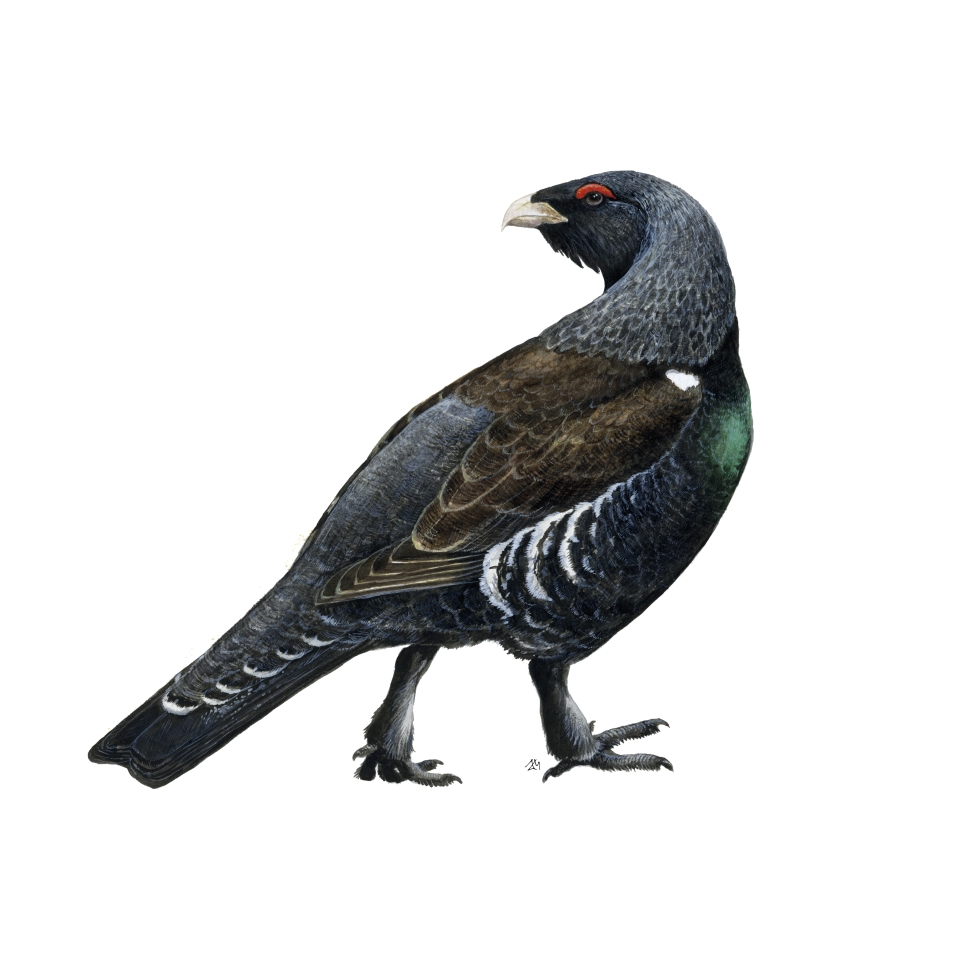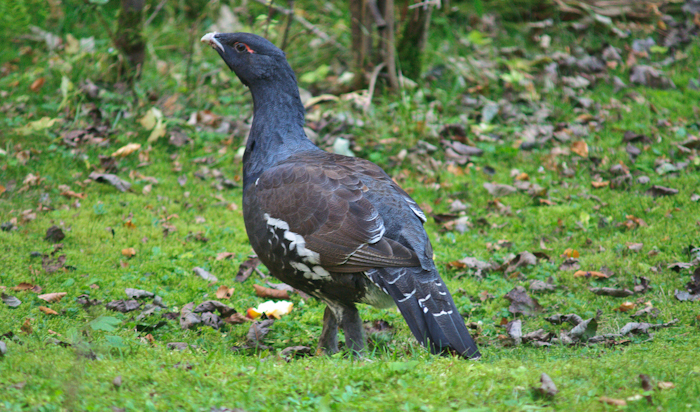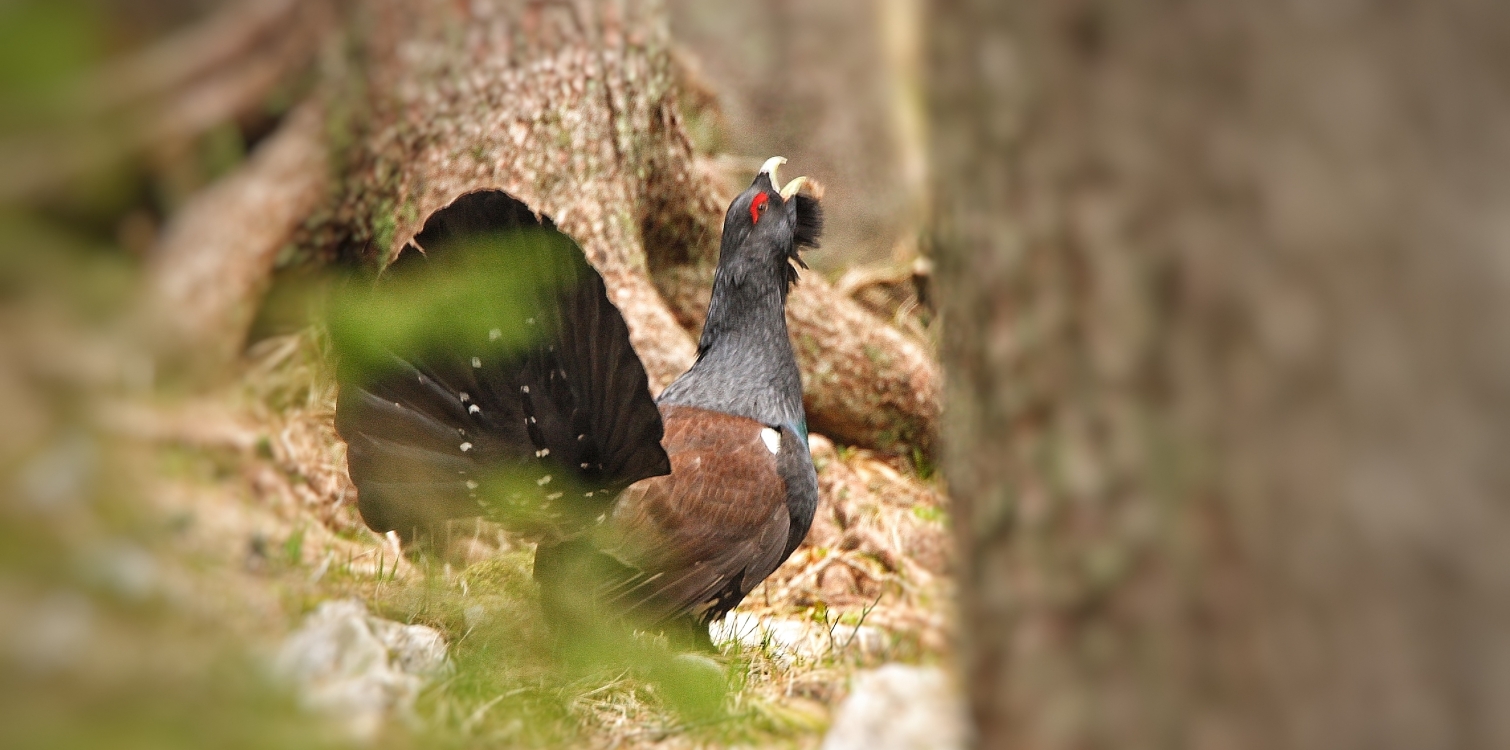
Western capercaillie (Tetrao urogallus)
|
Size |
|
|
Weight |
|
|
Diet |
|
|
Habitat |
|
| Kingdom | Animalia |
| Phylum |
Chordata |
| Class |
Aves |
| Order |
Galliformes |
| Family |
Phasianidae |
| Genus |
Tetrao |
| Species |
T. urogallus |
The capercaillie lives in areas with dense vegetation and undergrowth above 800 meters above sea level. Before mating, the male convinces the female with its characteristic calls and displays.
Several males gather at the breeding ground, showcasing their attributes. Sometimes, real fights occur among the males. The competition initially takes place only among the males, and in the end, the female selects her partner. After mating, the male leaves, and the female takes care of the offspring on her own.
The female lays 6 to 12 light brown pea-shaped eggs in a simple nest on the ground, in tall grass, or in ferns. She incubates them for about a month. As soon as the chicks hatch, they search for food together with their mother, and in cold weather, they huddle close to her.
The chicks of the capercaillie require a lot of protein, so they eat forest ants and other insects.
The western capercaillie lives in areas where there is a lot of dense vegetation and undergrowth at altitudes above 800 metres. It lives in coniferous and mixed forests. In Slovenia, it is found in the Alps, but it also lives elsewhere in Europe and in central Asia.
And what does it look like? The female and the male are very different. At up to 85 cm and weighing up to 5 kg, the male is the largest hen in our country. The feathers are black on the head, turning to a dark brown on the back and a distinctive dark green on the chest. Above the eyes it has eyebrow-like feathers in red, and on the crest of the wing it has larger white spot-like feathers. Females are not so colourful. They are characterised by a pea-brown colour.
The Western capercaillie is a protected animal in Slovenia.

DID YOU KNOW?
- The western capercaillie loves blueberries.
- A typical phenomenon in western capercaillie populations is the phenomenon of the so-called "crazy roosters". These are capercaillies that show no innate fear of humans.
Thank you.

